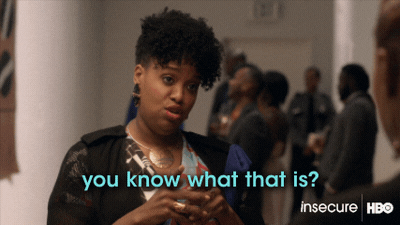Use Scope to Keep Your Novel on Track
Whether you’re writing fiction or nonfiction, novel or short story, identifying a well-defined scope will help keep your creative work focused. But while it might be easy to outline a scope on paper, sticking to it while drafting isn’t always easy. Even if you’re a hardcore plotter you can veer away from your story’s true north. And, to be honest, I don’t necessarily think that’s a bad thing. Sometimes, you need to go off course to discover more about a character, a relationship, or the world your story is set in. The key is to understand the signs that you’re going off course. Here are some signs I look for when I’m determining if I’ve gone too far off course.
Is the Plot Still Simple?
Listen, I know “simple” is subjective here, but if we’re being honest with each other there are complicated plots, and then there are overcomplicated plots. Complicated plots serve the story you’re trying to tell. Overcomplicated plots are a bunch of narrative threads knotted up in a giant ball that’s packed with too many twists and subplots that may lack the level of depth you and your reader want from the story. Not to mention it can be tough to keep track of all the narrative threads and land the story so that all of them reach a satisfying* resolution.
Side note: I would like to point out that satisfying doesn’t necessarily mean everything works out, but rather an ending that makes sense for the story, and its characters, and will leave the reader feeling like the story they just put down was worth the read.
If you’re prone to creating a bunch of narrative threads, do yourself a favor and write down the core external and internal conflict your character is going to be dealing with throughout the story. How do you know what these conflicts are? Ask yourself, “Why is today different?” By writing your core conflicts, you’ll be able to identify when you should dive deeper into a scene, subplot, or backstory, and when you can glaze over some of the details and just keep moving forward.
Are My Characters Growing?
I’ve said it before and I’ll say it again: Just because you are a plot-driven writer or you’re writing genre, does not mean you get to forsake character development. But if your scope gets too broad and you start to focus on too many characters or decide to run away with your plot, your central character(s) will suffer. Sometimes diving deeper into a character is a matter of buckling down during editing. But other times, if I feel like a character is too flat I always look to see if I’ve blown myself off course. I take a look at the main internal conflict the character should be dealing with and see how my scenes are adding to their development.
I find this is easier to do when writing novels, but more difficult when writing short stories because I only have so many pages to work with. But, whether I’m writing a novel or a short story, I try to focus on impactful details and lean on scenes to show who my characters are. Not only does this let their actions speak for themselves, but it also alleviates the need to write lengthy descriptions.
Do I Really Need This Scene?
Just like you should go in knowing what the central external and internal conflicts are, you should also have an idea of the major scenes. Now, for all the pantsers out there who are screaming: Stopping telling me what to do! I’m not. If you prefer flying by the seat of your pants when writing, I implore you to go for it. But whether you’re a panster or a plotter, I guarantee that you have an idea of some of the scenes you need to write to make the story work.
Keeping these key scenes in mind will help you stay on target with your scope. If you go off the rails, the number of scenes it’s going to take to get to the next “key” scene you envisioned is going to increase (and take longer). Is this always bad? No! Sometimes, it might be exactly what the story is calling for because it adds to the plot’s core conflicts or deepens your character’s development.
However, if you find yourself writing a whole battle sequence with a shadow warrior at the base of a rock giant’s mountain and the only logic you can come up with to justify having the scene be part of the story is, “Why not?” odds are it might not make the final draft—and if it does, you better be ready to defend it tooth and nail because odds on your editor is going to be looking at you like….
At the end of the day, the scope is there to guide you (not limit you).
Having a clear definition of what the scope is, the core conflicts, the rough arc of your main character(s), and the key scenes you need to hit will help you stay on track or point you in the right direction if you do decide to dabble and wind up down a rabbit hole.


